CULINARY: The herbs Simon and Garfunkel made famous -- parsley, sage, rosemary, and thyme -- are all easy to grow and use. Once the herb bug has bitten you, though, you will find yourself seeking out less common culinary herbs. Marjoram is a close cousin to thyme, which I find a bit milder. Oregano is a staple in Italian foods and is a very robust plant that must be kept in check. Tarragon adds a bright taste of anise. Chives are easy to grow and are a cut-and-come-again plant. Cilantro is an annual that often will re-seed itself. Basil is another annual, a bit problematic for me to grow, but it comes in so many different varieties that it is well worth the effort. Sorrel has an interesting sharp flavor that is hard for me to pin down, but it is a welcome addition to salads. Nasturtium flowers add a peppery tang and bright color to salads as well, and their seeds can be pickled as a substitute for capers. Winter savory is another peppery herb. Borage adds a slight cucumber-like taste.
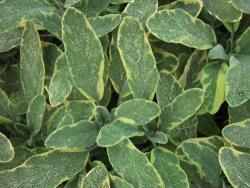

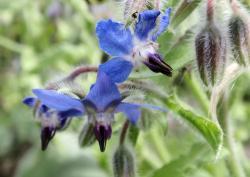
Variegated Golden Sage (Salvia officinalis 'Icterina') Sweet Marjoram (Origanum majorana) Borage (Borago officinalis)
MEDICINAL: Virtually all herbs may be used in a medicinal manner, although caution should be taken to be aware of toxicity and possible ill effects. Comfrey is likely the easiest to start with. A large leaf can simply be crushed against itself to release its milky sap and laid against a bruise or scrape as an on-the-spot poultice. Hyssop is another go-to herb: the leaves for wounds and bruises, and an infusion for respiratory problems. Echinacea provides lovely late-season color, food for the birds if one leaves the seeds to ripen, and it is also a good all-purpose herb for colds and the flu. Arnica is a lovely little groundcover that is very helpful in a salve for cuts and bruises. While catnip can over-stimulate felines, as a tea it can have a calming effect on youngsters. With a bit of research, one can easily make specific herbal blends to be taken as tea for various ailments, adding in honey for sweetness.

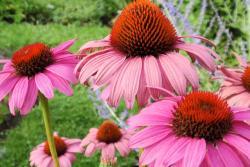
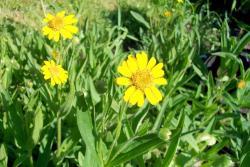
Comfrey (Symphytum officinale) Purple Coneflower (Echinacea purpurea 'Rubinstern') American Arnica (Arnica chamissonis)
COSMETIC: Vinegar rinses for hair are simply a matter of soaking fresh herbs in vinegar in the sun for a month or so and then straining. It really gets out all residual shampoo and strengthens your hair. Salves are another easy-to-make product: Gently heat any combination of solid and liquid oils (coconut, olive, almond, sesame, etc.) with fresh or dried herbs, then add in enough beeswax to cool to the texture you prefer. A good ratio I've found is 1 part solid oil, 2 parts liquid oil, and 1/3 part grated beeswax. Use any herbal book or internet search for combinations you find pleasing or to treat specific problems. Some common herbs used in cosmetics and hair care are lavender, chamomile, calendula, roses, comfrey, sage, rosemary, lemon balm, and lupine.


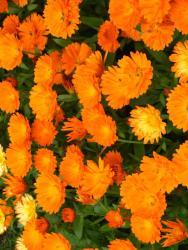
Lemon Balm (Melissa officinalis) Lavender (Lavandula x intermedia 'Grosso') Pot Marigold (Calendula officinalis)
REPELLENTS: Many herbs serve as insect repellents. My all-time favorite is southernwood, which forms a soft feathery shrub with a pleasing lemony scent that will repel moths. It is good for making sachets for your wool sweaters. Tansy will deter flies, ants, and even mice. Balm of Gilead, also known as cedronella, is a mosquito repellent. And, of course, the common fleabane can help guard against fleas. I will often make up a bouquet of strong smelling herbs, with or without blooms, for the kitchen table in the hot summer months when bugs can be annoying. In addition to discouraging insects, it also creates an interesting mix of aromas.
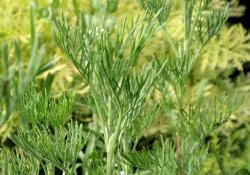
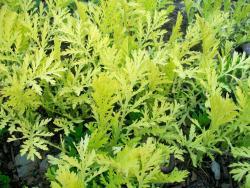
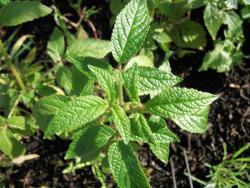
Southernwood (Artemisia abrotanum) Gold Leaf Tansy (Tanacetum vulgare 'Isla Gold') Balm of Gilead (Cedronella canariensis)
MAGIC: We can all have fun with a bit of voodoo in our lives. Many herbs are rumored to have magical properties, mostly based on old folklore. Horehound will protect one from the bite of a mad dog, angelica guards against evil spirits, garlic is repellent to vampires, and placing mugwort under your pillow at night will bring you wild dreams. All taken with a large grain of salt, but fun to play around with. I've made some interesting liqueurs combining herbs with berries and spirits to create homemade tonics with purported magical qualities.

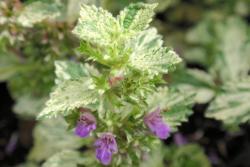

Garden Angelica (Angelica archangelica) Variegated Black Horehound (Ballota nigra 'Archer's Variegated') White Mugwort (Artemisia lactiflora 'Guizhou')
CAUTION: Many herbs have levels of toxicity, which one needs to be aware of. Belladonna is a beautiful plant, but take care around children as the shiny black berries are extremely toxic and are also quite palatable. Foxglove leaves contain digitalis, but should not be used for self-treatment. Aconite, often commonly called wolfbane, was used to poison arrows used in hunting wolves. I don't ban any plant from my gardens because of toxicity, but I do try to keep myself aware of the ones that are potentially harmful.
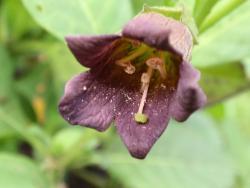

Deadly Nightshade (Atropa belladonna) Monkshood (Aconitum 'Stainless Steel')
This is just the tip of the iceberg regarding the uses of herbs. If you become interested in herbology, invest in a couple of good resource books and/or research the Internet. My favorites are "The Rodale Herb Book" as a great source for how to grow and use herbs, and anything written by Rosemary Gladstar for specific formulas. Herb starts are becoming more common in local nurseries, and there are many mail-order herb nurseries to choose from. They do tend to be more expensive than other plants, usually because once you introduce them to your garden, they will multiply happily - some to the point of becoming garden thugs. If you have the space and inclination for an herb garden, you may just find yourself captivated by these useful and charming plants.